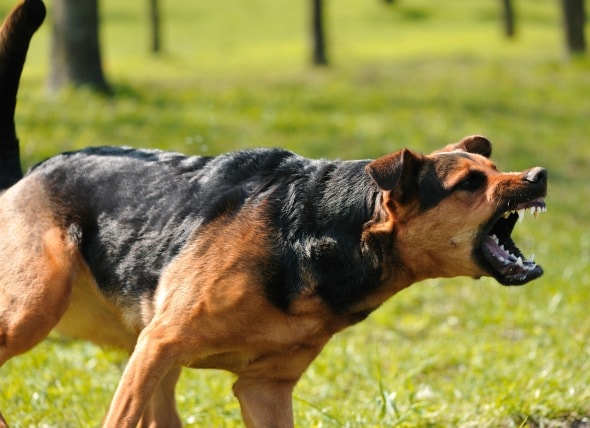
Dominance, Fear, or Predatory Aggression in Dogs
While some consider aggression to be normal behavior in dogs, it can be impulsive, unpredictable, and even dangerous. Aggressive behavior includes growling, lip lifting, barking, snapping, lunging, and biting. With aggression directed towards family members or other people familiar to the dog, treatment is currently aimed at controlling the issue, as there is no known cure.
Symptoms and Types
It can be challenging to determine whether a dog is demonstrating abnormal aggression. Aggression is often exhibited near the dog's food bowl, toys, and times when the dog is being handled. This type of aggression is shown to familiar people, most often their handlers or household members.
Aggression can be seen often and it may not even be towards the same person regularly. Aggression is often displayed as:
- Ears tucked back
- Snarling
- Eye aversion
- Biting
- Lunging
While most aggression towards familiar people is a sign of a serious problem, there are some instances where an animal will be aggressive following a painful medical procedure or if they are in pain regularly.
Causes
Some breeds are more aggressive than others. These breeds include Spaniels, Terriers, Lhasa Apsos, and Rottweilers, amongst others, but aggression can appear in any breed. Dogs will normally demonstrate signs of aggression between the ages of 12 and 36 months, and is seen more in male than female dogs. Medical conditions and the after-effects of medical procedures can also cause an animal to exhibit aggression towards familiar people. In addition, inconsistent or harsh punishment from the dog's owner can contribute to the animal’s aggression.
Diagnosis
During a medical examination, your veterinarian will look for fear-based aggression, anxiety conditions, and pathological disease. Typically, however, a traditional blood test will not find any abnormalities.
tryptophan
A type of amino acid that is essential for the rebuilding and repair of damaged tissues in humans and animals
muzzle
The term for the nostrils and muscles in the upper and lower lips of an animal; may also be used to describe a type of tool used to keep an animal from biting

